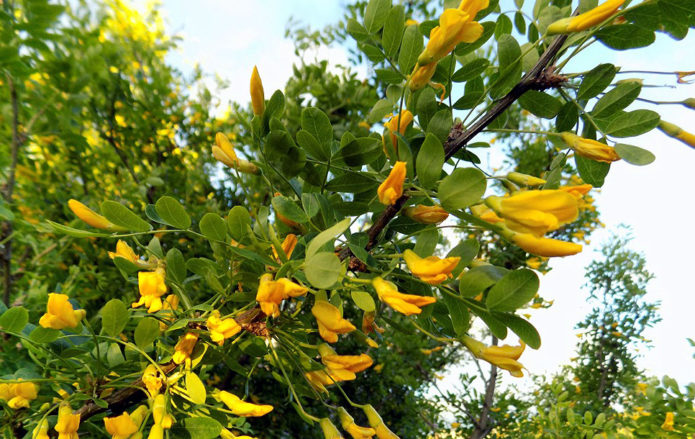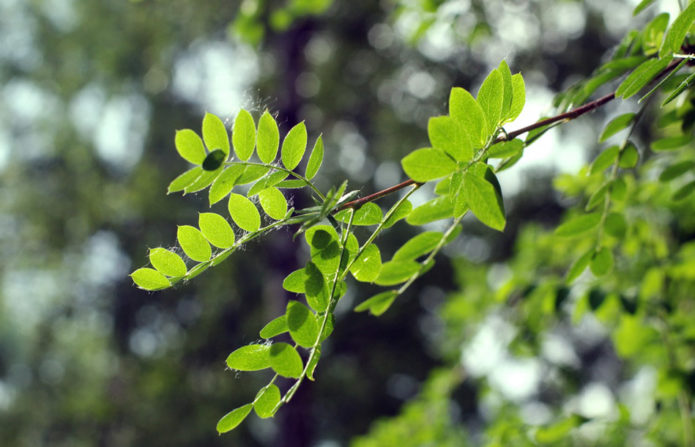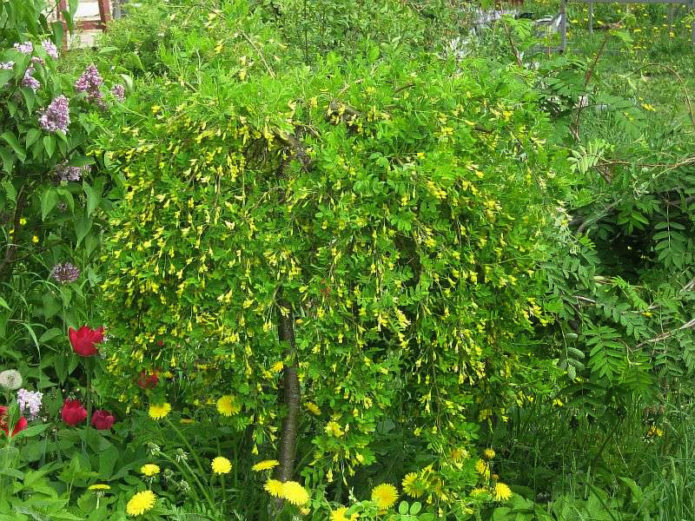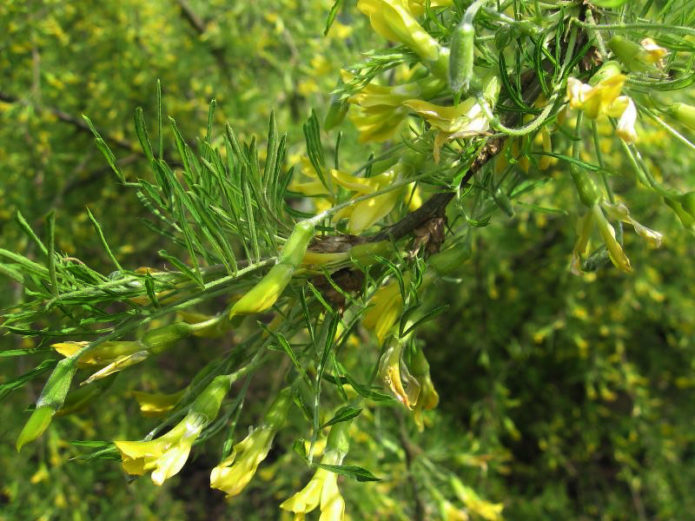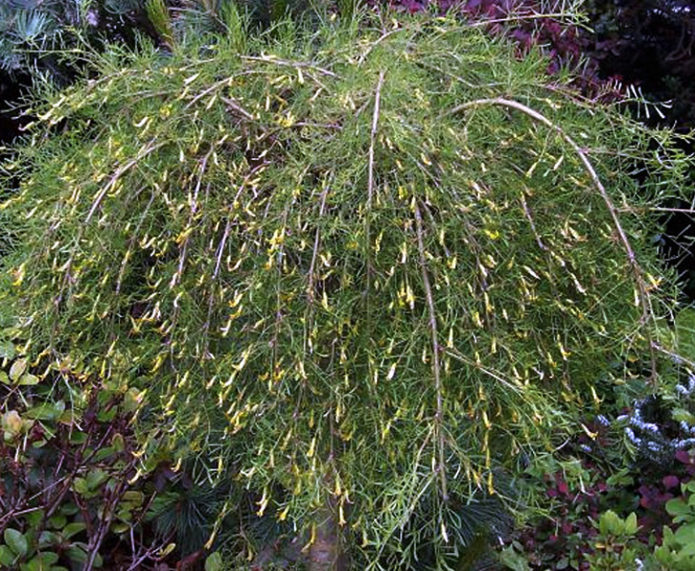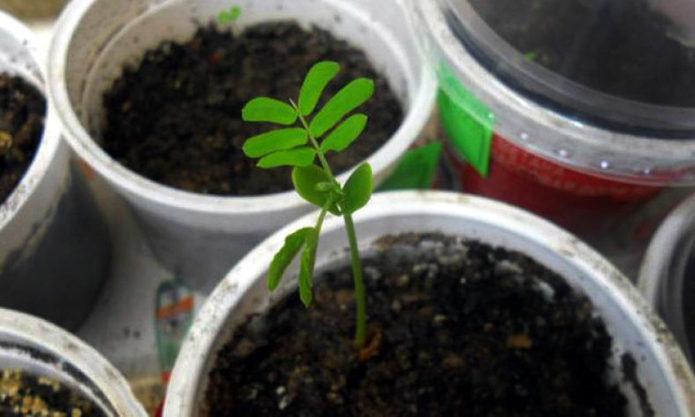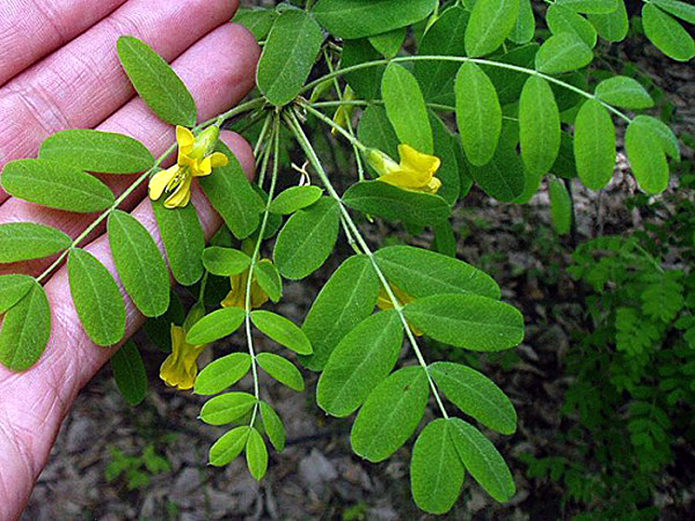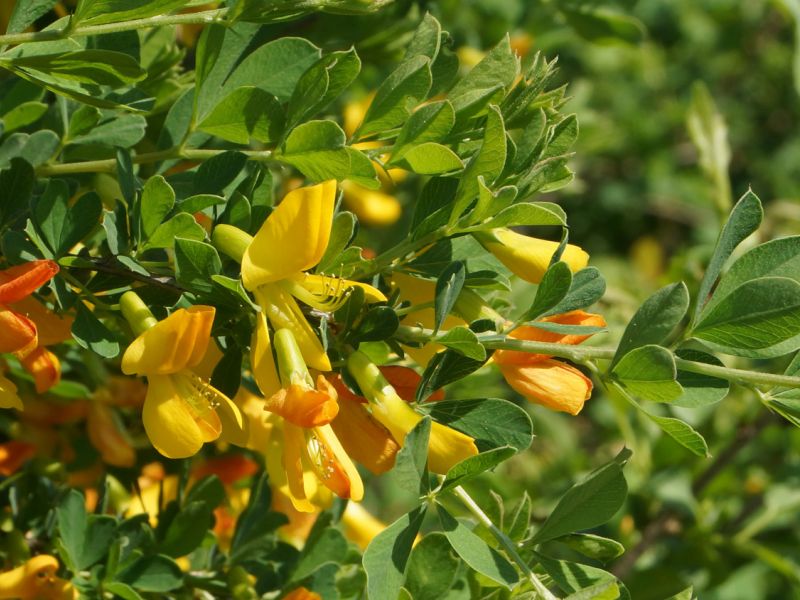Yellow acacia pleases gardeners with its bright flowers from May, and green foliage - until late autumn. The delicate aroma attracts bees, making this shrub an excellent honey plant.
Content
What is the Difference Between Yellow Acacia and Tree Caragana
There is no difference between yellow acacia and tree caragana, since this is one and the same plant - a multi-stemmed shrub, a representative of the legume genus. The first name is everyday, the second, Caragana arborеscens - botanical, is used by specialists. The word "Karagana" was borrowed from the Kirghiz and is translated as "black ear". Acacia got it because the thickets of this plant served as a home for a special breed of foxes, the name of which is composed of two words: "kara" (black) and "gana" (ear).
Interestingly, in Russia in the 19th century, another name for the yellow acacia was popular - pea (or pea).
Growing features
In the wild, the yellow acacia reaches a height of 7–8 m, cultivated by humans is limited to 2–3 m, or even less. She has a spreading crown, and the annual growth of branches is 0.5 m in height and 0.3 m in width, so plants need regular "haircuts" if the owner of the plantings does not want them to grow too much.
Acacia is not just a perennial, but a long-term culture - its age reaches 60 years. This means that the plant can be safely used in projects designed for a long time.
Role in landscape design
In landscape design, yellow acacia performs two main functions: decorative and protective. It will decorate the garden in the form of single and group plantings (as a result, excellent alleys are obtained), it will be interesting to look in a composition with other plants. Acacia is easily pruned; if desired, various shapes can be formed from its crown.
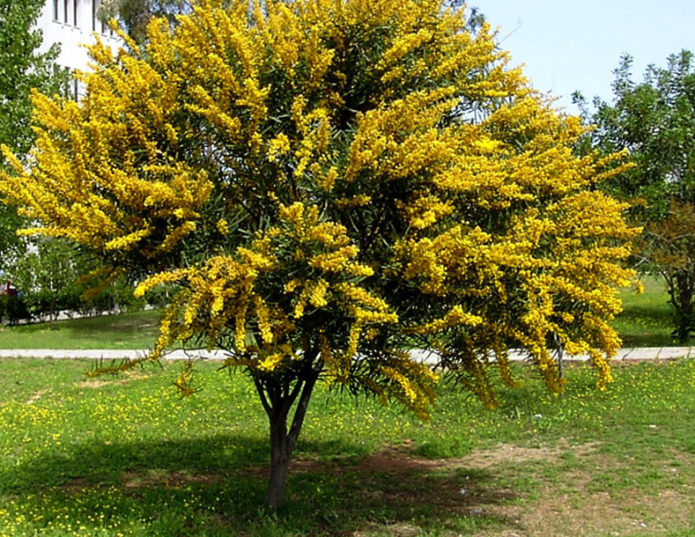
Acacia yellow in single planting gives dynamism to the garden design and serves as the main color accent
Single plantings of acacia look vivid in the design of the garden plot.
The acacia hedge has not only a protective but also a decorative function.

Since acacia shrubs are easy to prune, they are often used to create clear geometric shapes in landscape design.
Yellow acacia can be used in the art of topiary - the formation of a crown in the form of various shapes.
As for the protective functions, many gardeners will confirm: it is difficult to find a more reliable hedge that protects the site from prying eyes. The required density can be achieved by planting the plants in a checkerboard pattern at a distance of 25 cm from each other. In addition, acacia protects nearby low-growing crops, as it is resistant to strong winds and even windbreaks. And the earth from this plant only benefits: it strengthens the soil, does not allow the slopes to erode, enriches the soil with nitrogen.
The best growing conditions
The natural habitat for the yellow acacia in a garden or summer cottage is open ground. At the same time, the plant is actively used in container gardening, which is popular today: grown in a tub, it can decorate a terrace in summer, and in the cold season it will look organically in a winter garden.
The duration of flowering of yellow acacia is on average 15 days, each individual flower lives for about a week, and in cool weather - up to 10 days. The beginning of the blooming of buds depends on the place where the culture grows: in the Crimea it is April, in Siberia - the first half of June, in the European part of Russia - the end of May. The weather conditions for a particular year, of course, make adjustments to this schedule.
There are no places in Russia where the cultivation of yellow acacia would be problematic. There is a lot of it in the wild in Altai and Siberia. As a cultivated plant, acacia can be found in the European part of the country, in the southern steppes and even on the Kola Peninsula.
The unpretentiousness of the yellow acacia extends not only to the climate, but also to the soil. It can be anything, and even infertile. Ideally, sandy loam. For this plant, good drainage and the occurrence of groundwater not too close to the surface are desirable.
Popular shrub varieties with photos
In landscape design, decorative varieties of tree caragana bred by breeders are actively used: large-flowered (Grandiflora), with a crown in the form of a pyramid (Pyramidalis) and a ball (Globosa). The most popular varieties are Pendula, Lorberg, Walker.
Pendula
The variety is also called “caragana weeping prostrate”. This is a short shrub with branches creeping along the ground. If you graft a plant to a classic tree caragana, you can get an original small tree with a weeping crown.
Lorberg
An original plant with an openwork crown, the narrow leaves of which resemble larch needles. This variety is distinguished by rapid growth, the shrub can reach a height of 3.5 m. For its unusual appearance, the plant is called the "northern palm". The buds are smaller than that of the classic species, but the flowering is more generous.
Walker
The "parents" of the variety are Pendula and Lorberga, and they provided Walker with an openwork crown, needle-like leaves, reaching a length of 10 cm. The bush is low, with falling branches.
Planting methods
There are several ways to reproduce tree caragana:
- seeds;
- cuttings;
- layering;
- dividing the bush;
- root shoots.
Seeds
Propagation by seeds ripening in pods is one of the easiest ways. This option is also convenient because sowing can be done both in autumn (from September to mid-October), immediately after collecting the seeds, and in early spring.
Here's how they do it:
- The seeds are soaked for 5-6 hours (maximum - for a day) in ordinary water to accelerate their germination.
- Seeds are placed in prepared, moderately moist soil to a depth of 4–5 cm.
- Crops are mulched with sawdust or peat.
When planting in spring, it is advisable to carry out a preliminary stratification of seeds, creating for them an imitation of winter conditions. This can be done in the refrigerator at a temperature of 0aboutC within 1 month.
There is a practice of growing seedlings in flower pots. In this case, freshly harvested seeds are used, and the soil is prepared from garden soil and sand in proportions of 3: 1. There must be a hole at the bottom of the pot to drain excess water and a layer of expanded clay. The plant is planted in open ground in the spring.
Cuttings
Cuttings for planting are harvested during the formative pruning of the bush. The seedlings grown from them are planted in a sufficiently warmed soil at the end of April - mid-May; during autumn planting, it is important to cope with this type of work 2 weeks before the start of frost. How they do it:
- Dig holes 40–50 cm deep at a distance of 50 cm from each other.
- A drainage layer of broken brick or gravel (with a total weight of about 2 kg) is placed at the bottom of each, sprinkled with soil.
- A complex fertilizer is placed in the ground, which includes nitrogen, phosphorus and potassium, and a little compost is added.
- A seedling is lowered into the pit so that the root collar after the end of the work is deepened into the ground by 1.5 cm.
- The roots are straightened so that there are no voids between them (because of them the roots can dry out), the seedling is shaken.
- The pit is covered with earth, it is well tamped.
- The plant is watered.
- The trunk circle is mulched with needles or sawdust.
Leaving after disembarkation
Despite the fact that the yellow acacia does not require increased attention to itself, a number of rules for caring for the plant must be followed, especially in relation to young shrubs.
Care during growth and flowering with further preparation for winter
Watering is required for acacia in dry weather, but there should not be more than three of them per week: if there is an excess of moisture in the ground, the roots may begin to rot. Periodic loosening of the soil with simultaneous removal of weeds is useful. As for dressings, they are relevant only for young plants. This can be a 1:50 mullein solution.
Already from the second year of life of acacia, formative pruning is required, during which the owner lays down all the necessary parameters of the future plant. "Hairdressing services" in subsequent years are reduced to a greater extent to the removal of dried and damaged branches.
Yellow acacia is quite resistant to various diseases and pests, and preventive disinfection (for example, with folk remedies) is able to fully protect the plant.
As for winter frosts, you do not need to cook acacia for them, it can withstand even 45-degree ones. Unfortunately, the plant can suffer during heavy snowfalls - the branches will not withstand the load, however, it is problematic to foresee such a situation and manage to protect the plant.
What problems do gardeners have with growing yellow acacia
There are several problems that gardeners face most often:
- The branches and shoots of acacia dry. The reason is a fungal infection that gets into the wounds on the bark. The solution to the problem is to cut out damaged branches, and a preventive measure is to protect the acacia from mechanical damage.
- The leaves turn brown and fall off. This is also the result of a fungal disease called leaf rust. Treatment - treatment with Bordeaux liquid, prevention - collection and destruction of fallen leaves and milkweed growing nearby, since it is one of the main distributors of this infection.
- Acacia growth slows down, the shoots are deformed. This is how the acacia false shield manifests itself. In the fight against it, the drug "Vofatox" is effective.
- The leaves turn yellow and fall off. These are signs of powdery mildew. Such drugs as "Chistotsvet", "Keeper" are effective against it.
- The bark on the trunk of the acacia begins to peel off, becomes covered with lichens. This is the trouble of old plants. The solution to the problem is pruning under the stump. The bush will definitely give fresh growth.
Yellow acacia helps a person to solve several problems at once - to carry out landscaping with an unpretentious winter-hardy and drought-resistant plant, protect the soil from erosion, and make it more nutritious for other crops.In addition, planting during flowering attracts beneficial insects to the site, and beekeepers are given the opportunity to get very useful acacia honey.
